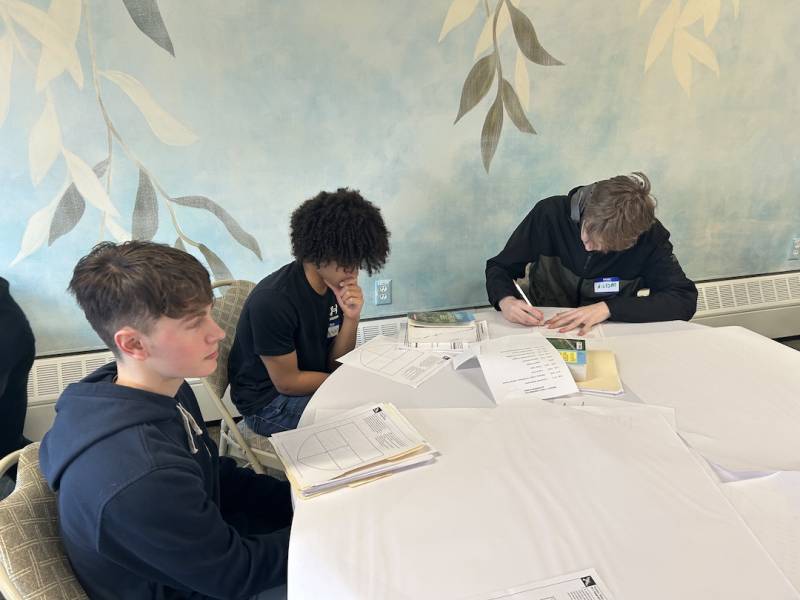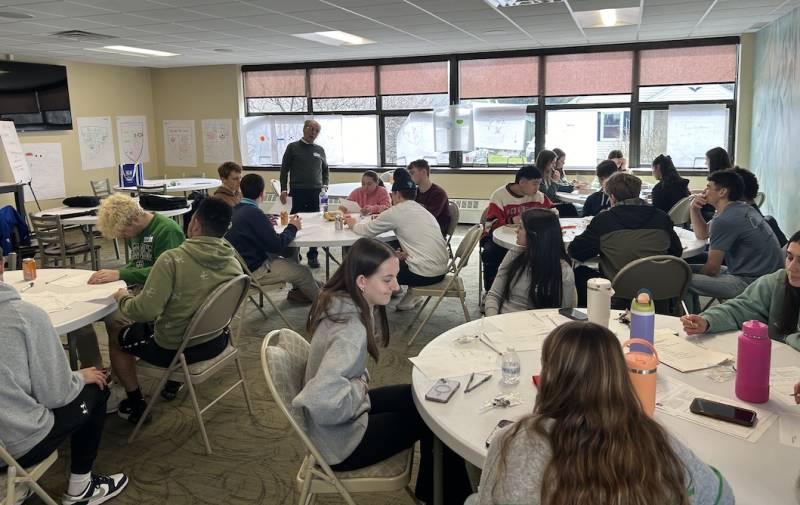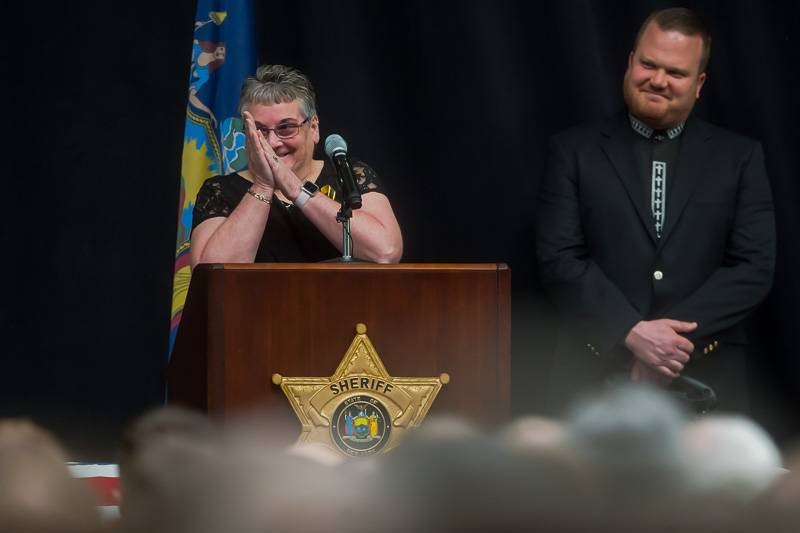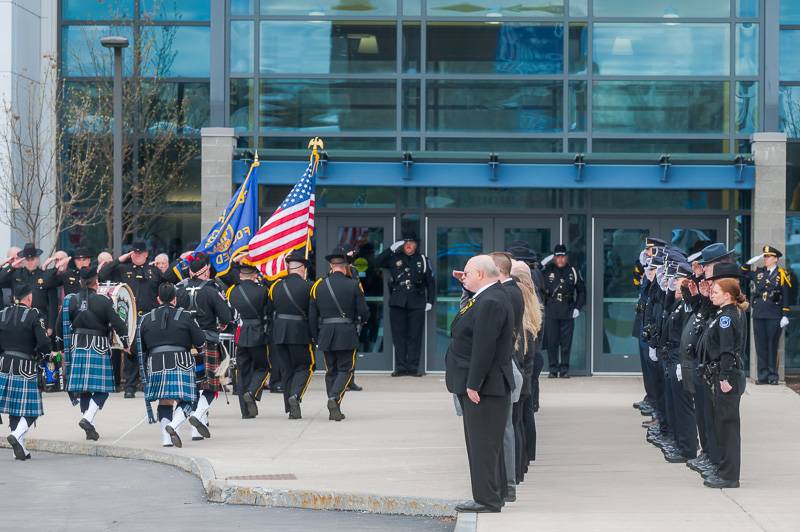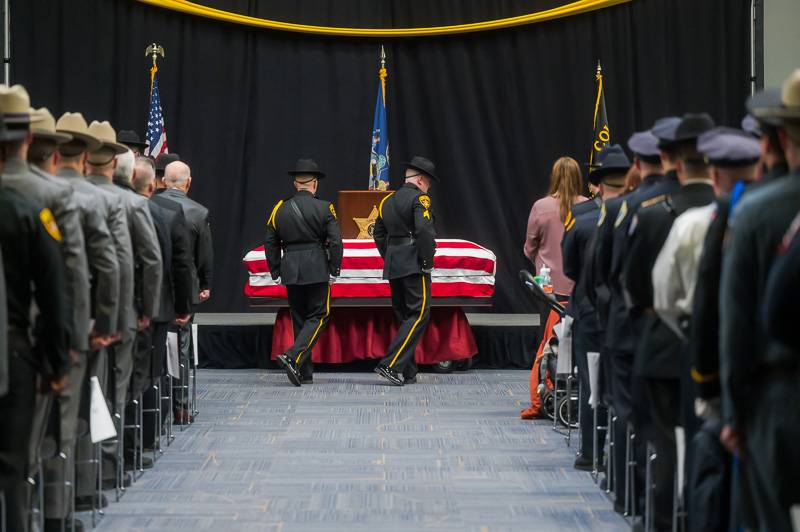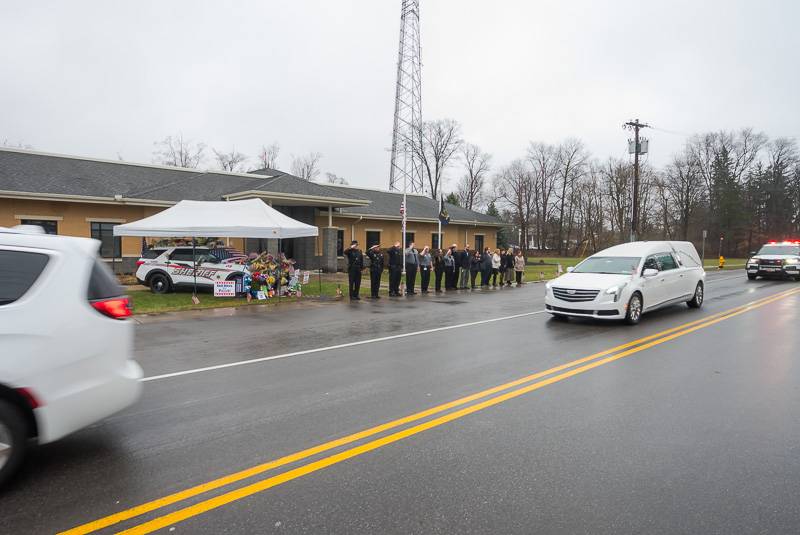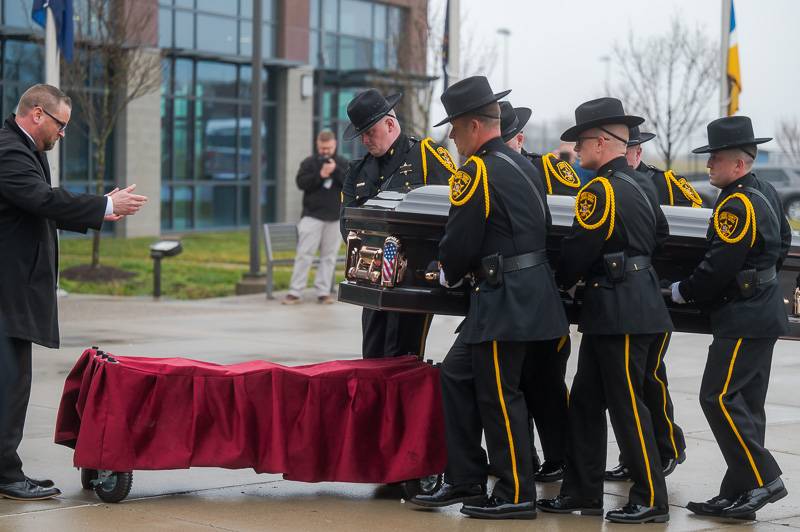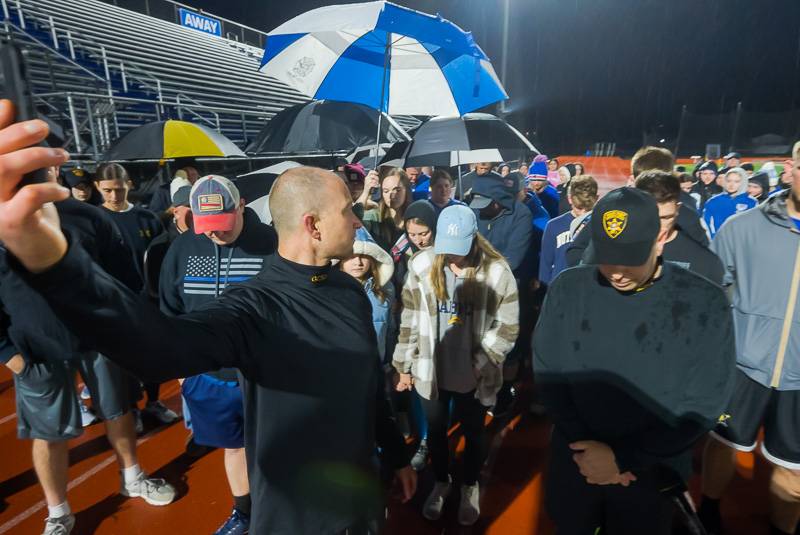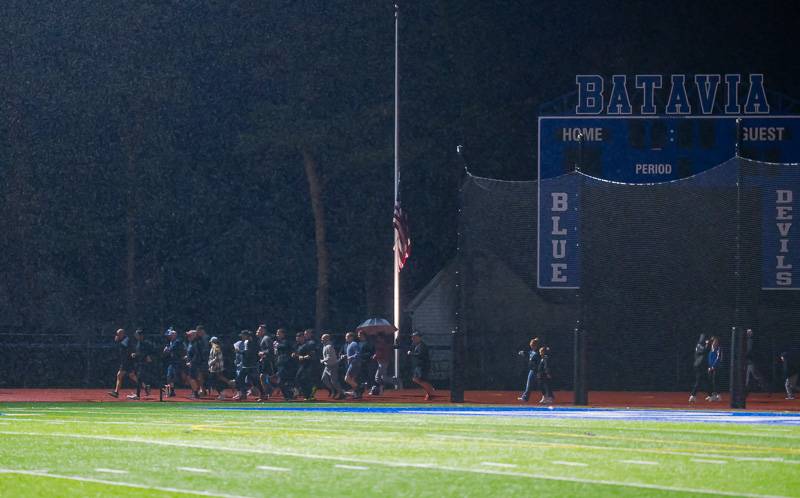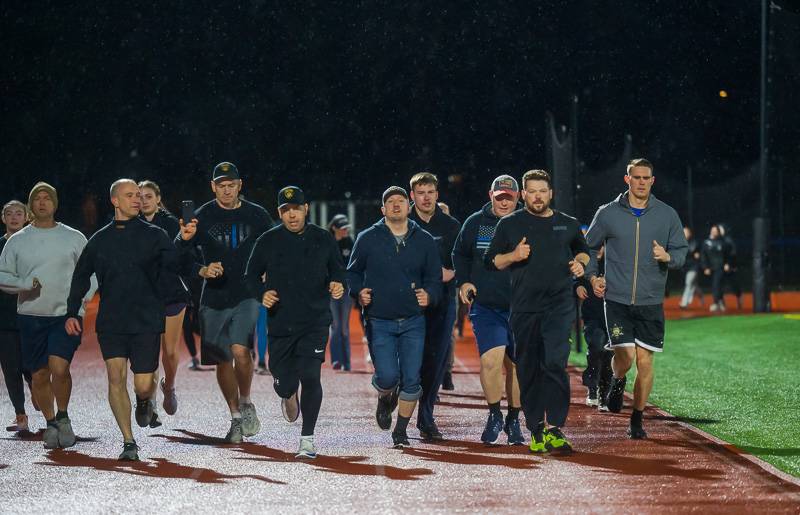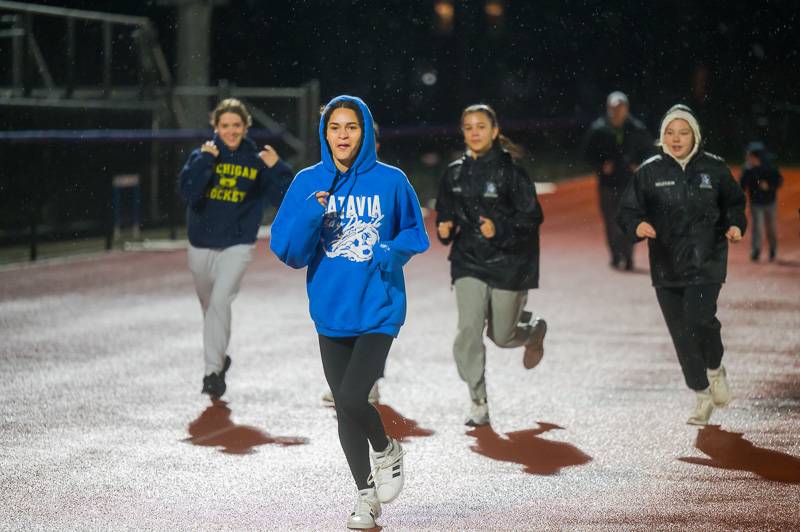Law and Order: Alexander man accused of child sex abuse

John P. Volpe, 71, of Buffalo Street Road, Alexander, is charged with predatory sexual assault against a child, course of sexual conduct against a child 1st, two counts of criminal sexual act 1st, attempted rape 1st, aggravated sexual abuse 2nd, aggravated sexual abuse 1st, aggravated sexual abuse 3rd, three counts of sexual abuse 1st, rape 3rd, two counts of criminal sexual act 3rd, and two counts of forcible touching. Volpe is accused of engaging in numerous acts of sexual conduct involving a child beginning in 2012 and continuing until 2024 with a known victim. Volpe was arrested on March 7. He was arraigned and ordered held on $20,000 bail. This is an ongoing investigation and additional charges are possible, according to the Sheriff's Office. The Sheriff's Office was assisted in the investigation by the NYS Department of Environmental Conservation Police. The FBI also participated in the investigation.

Randolph R. Byrd, 60, of Batavia, is charged with burglary 2nd, assault 3rd, unlawful imprisonment 2nd, criminal obstruction of breathing, criminal mischief 4th, and resisting arrest. Byrd is accused of illegally entering a residence on East Main Street on March 5 and attacking a victim. He allegedly resisted arrest and damaged an officer's portable radio. He was arraigned and held in the Genesee County Jail.
Anthony Michael Gabri, 28, of Long Wood Drive, Rochester, is charged with criminal impersonation of a public servant and front windshield non-transparent. Gabri was stopped at 11:30 a.m. on March 18 on an alleged traffic violation on West Main Road, Le Roy, by Deputy Jeremy McClellan. During the stop, Gabri was allegedly found to be wearing the badge of a village of East Rochester constable and an outer carrier tactical vest typically used to carry body armor while traveling to Batavia to serve paperwork for his privately owned business and not under the direction of village authorities. He was issued an appearance ticket and released.
Alicia M. Lyons, 44, of Batavia, is charged with trespass. Lyons is accused of being at Kwik Fill, 99 Jackson St., Batavia, on March 11, after being previously barred from the property. She was issued an appearance ticket.
Trevon L. Armstrong, 38, of Batavia, was arrested on a warrant on March 11. Armstrong was initially arrested on Nov. 16 on a charge of criminal mischief 4th after allegedly damaging property during an incident on Denio Street. He is accused of failure to appear in court on the charge. Armstrong was arraigned in City Court and released on his own recognizance.
Ronald W. Lewis, 36, of Ogden, was arrested on March 8 on two warrants issued by City Court. The first warrant stems from an incident on July 7, when Lewis was charged with petit larceny after allegedly stealing merchandise from a local business. The second warrant is the result of an incident reported on Sept. 24, when Lewis was charged with trespass after allegedly refusing to leave United Memorial Medical Center. Lewis was arraigned and released.
Niranh S. Woods, 29, of Batavia, was arrested on a warrant on March 8. Woods was initially charged with aggravated unlicensed operation of a motor vehicle 2nd on Aug. 5. The warrant was issued after he allegedly failed to appear in court. Woods was arraigned in City Court and released.
Robert J. Schultz, 66, of Elba, is charged with criminal mischief 4th. Schultz is accused of damaging another person's car on March 8 during a fight on Liberty Street. Schultz was issued an appearance ticket.
Christopher G. Marr, 55, of Batavia, is charged with DWI. Marr was stopped on March 3 on South Main Street by a Batavia patrol officer. He was issued an appearance ticket.
Shamond R. Adams, 27, of Batavia, is charged with a barking dog violation. Adams is accused of allowing his dog to bark for an extended period of time on March 9. He was issued an appearance ticket.
John Carl Ireland, 39, of Sumner Road, Darien, is charged with criminal mischief 3rd. Ireland is accused of damaging the property of another person with a value in excess of $250 during an argument reported at 11:40 a.m. on March 12 at a location on Sumner Road, Darien. Ireland was arraigned and released.
Torres Epifanio Nazario, 47, of Church Street, Bergen, is charged with DWI, driving with a BAC of .08 or greater, moving from lane unsafely, and improper turn signal. Nazario was stopped at 9:57 p.m. on March 9 on Route 19 in Bergen by Deputy Zachary Hoy. He was issued tickets and released.
Khadija Aisha Wilson, 27, of Freeman Street, Buffalo, and Shakayla Monique Williams, 29, of Petters Street, Buffalo, are charged with petit larceny and conspiracy 6th. Wilson and Williams are accused of shoplifting from Ulta Beauty on Veterans Memorial Drive, Batavia, at 12:39 p.m. on Feb. 27. Deputy Ayrton Blankenship and Sgt. Michael Lute investigated the case.
Mark W. McWethy, 56, of South Main Street, Batavia, is charged with criminal possession of a controlled substance 7th and failure to keep right. McWethy was allegedly found in possession of cocaine during a traffic stop at 9:47 p.m. on March 18 on Main Street, Batavia. He was processed at the Genesee County Jail and released.
Dustin James Brown, 22, of Raymond Road, Ontario, Canada, is charged with DWI, driving with a BAC of .18 or greater, drinking alcohol or using cannabis in a motor vehicle, and unregistered motor vehicle. Brown was stopped following traffic complaints at 5:50 p.m. on March 14 on Byron Holley Road, Byron, by Deputy Stephen Smith. He was processed at the Genesee County Jail and released.
Michael Anthony Sweet, 38, of Raymond Avenue, Batavia, is charged with criminal possession of a controlled substance 7th and driving without an inspection certificate. Sweet was stopped at 1:09 a.m. on March 19 on Oak Street by Deputy Jacob Kipler. Sweet was processed at the Genesee County Jail and released.
Vincenne Elizabeth Mendrysa, 68, of West Main Street, Batavia, is charged with criminal contempt 2nd and falsely reporting an offense to law enforcement 3rd. Mendrysa was arrested on March 14 after allegedly reporting an incident to law enforcement that did not occur. Mendrysa was allegedly found in violation of an order of protection at the time of her arrest. She was jailed pending arraignment.
Sharon Renee Boyer, 55, of Alexander, is charged with DWI and driving with a BAC of .08 or higher. Boyer was stopped by State Police at 11:28 p.m. on March 15 in the Town of Alexander. She was released to a third party.
















